Capturing 3D geometry from a physical object is a hot technology topic but there’s a bewilding array of products, processes and workflows available from a range of vendors. Al Dean takes a quick look at what’s available 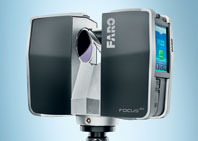
In the world of reverse engineering there’s a huge range of technology and processes to capture the form, geometry and nature of physical objects. These can be design concepts, existing components or conceptual models.
Reverse Engineering hardware is a highly active field. Manufacturers change their approaches quickly, and many have recently added new products and technologies to their product ranges. For example, Faro was best known for its digitising arms, but now offers a huge range of devices including scanners, trackers and other systems. In recent years the industry has also attracted new entrants, remixing existing methods with new ways of working. With this in mind we’re starting up a new Microsite, which we’ll be adding to on a regular basis. Here’s DEVELOP3D’s guide to the latest and greatest in hardware available for all types of users with different budgets and process requirements.
Digitising arms: the classic device
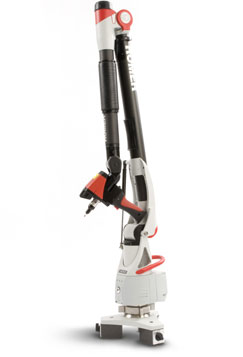
If there is a family of devices that can be considered to be the ‘Swiss Army’ knife of reverse engineering, it’s the classic digitising arm.
With highly rigid sections (commonly aluminium, titanium, carbon fibre or other exotically stiff materials) and high accuracy rotational encoders, digitising arms use precise measurements to work out where the arm’s tip lies in 3D space. Data is then communicated back to the control software to build up a 3D point cloud.
The devices come in a range of sizes, starting with an entry-level MicroScribe through to huge machines from the likes of Faro that have 12 foot (3.6m) arms and accuracies down to 0.016mm. There truly is something for everyone and all budgets.
While these devices started out as inspection arms, in many cases using a hard, ruby tipped probe to capture specific points in inspection processes, they quickly found a home in reverse engineering and can now be found fitted with all manner of accessories. These include white light and laser scanning heads that can capture complete forms.
Romer has recently introduced the Absolute Arm which integrates both hard probe and laser scanning in a single integrated device. There is also a wealth of integration options available to directly input data into your CAD system, as well as special purpose plug-ins
Industry Players
Non-contact scanning: White light versus Laser
There are two key forms of non-contact scanning: Laser Scanning and White Light.
White Light scanning sees the device project multiple striped lights towards the physical object. As these hit the object, ‘interference’ occurs between the lights. The difference between the lights is measured and the scanner is able to formulate digital coordinates of the object.
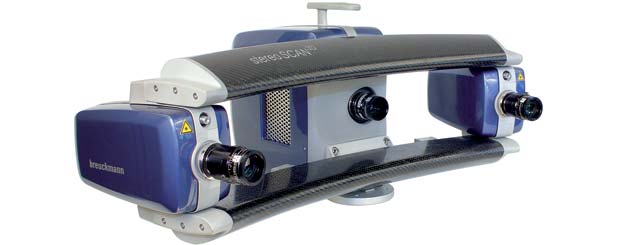
Laser scanning differs in that a laser dot or line which is projected onto an object from a hand-held device is then reflected back into a sensor. With knowledge of the nature of the laser, angles between the various components, the point of reflection can be calculated and stored in 3D.
Both technologies have their strengths and weaknesses and have found homes in various industries and workflows. There is also a huge range of products available so it’s worth investigating what’s out there to find a perfect match for your requirements.
Industry Players
Noomeo: The Best of Both Worlds
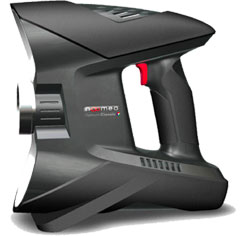
NOOMEO provides a combination of structured/white light scanning with the portability of laser scanning. The company’s device, the OptiNum, doesn’t require laying stickers, targets or any other space positioning equipment as commonly found in laser scanning, and is highly portable. It accomplishes this by projecting a video steam of point-based light (rather than lasers) and triangulates the points using two cameras. More details here.
Handheld laser: for covering serious ground
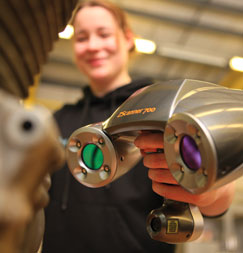
The benefits of handheld laser scanning are that you have almost infinite reach (the limitations being the cable between the laptop and the device) and can capture entire parts without the need for registering separate scans (which is common with other methods).
Market leader in this space, Creaform
(Z Corporation rebadges its products as the ZScanner) is now competing with an onslaught of other new entrants in the space and costs are being driven downwards.
Industry Players
Large scale laser scanning: for plant and factory
Reverse engineering within the early stages of product design is often devoted to capturing the physical concepts of a part or a component to interface to. For some users these components are much larger than a foam core mock-up. In the world of process plant, factory cell development or other larger scale projects a more specialist piece of equipment is required. Ultra-large scale scanning devices come in two basic flavours: Laser Scanners and Laser Trackers.
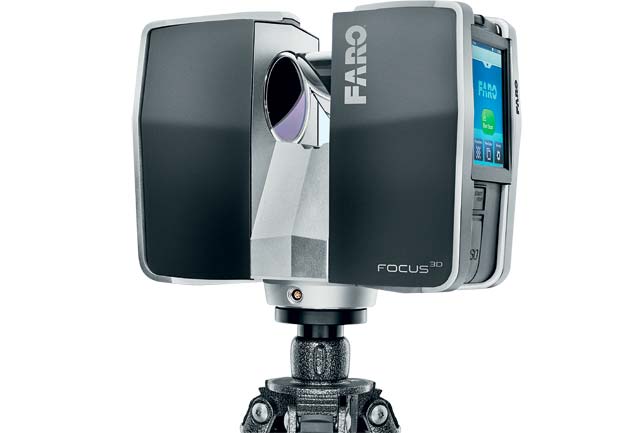
Laser Scanning devices follow the form of smaller scale products, but can handle the capture of huge datasets. The technology works by sending out a laser beam, at a known power and angle. The encoders on the internal mirror system track the direction of the beam and the distance is calculated according to the time it takes to bounce back to the sensor.
There are many vendors working in this space, including well known names such as Leica and Trimble. Faro has recently released the Focus3D which it claims to be the smallest device available.
Laser Trackers differ in that they use a combination of laser tracking and a handheld target called a SMR (spherically mounted retroreflector). This is placed on the object to be measured and its position is triangulated and fed back to the control software. Again, these devices are highly complex, but are shrinking all the time, both in terms of size and cost.
Industry Players
Selecting hardware: beyond cost and resolution
For those looking to bring their reverse engineering capabilities in house, perhaps to achieve a quicker turnaround or just to gain a competitive advantage, there is a huge range of technologies to evaluate. Each device has its own technical specifications, listing all manner of facts about the product, but for those short on experience, things can be a little confusing.
Many purchasers obsess over two things: price and resolution – they ask: will the system give me the results I need and can I afford it? While these are important metrics on which to judge a potential purchase there are many other importnat considerations. Here are three of our top tips to help you make that all important decision.
The size of parts that a machine can handle is an important consideration. While good scanning software can stitch together multiple point cloud datasets, it can be a huge timesaver to scan everything in one go. At $2,995 the NextEngine scanner is one of the most affordable machines on the market but it can’t work effectively with objects that are over half a metre in size.
Another example comes from the automotive field, where scanning large components such as body panels in a very short space of time is a common requirement. Certain types of laser scanners need almost complete darkness for them to work effectively. This might mean extra investment in a pop up tent or shroud on site or a risk of making yourself very unpopular with your colleagues or clients by having to turn out the lights!
Consumables are also an important consideration. Many laser scanners use targets in order to track the scan. These typically cost about £50 a box and if you are working on a large component, such as a door skin, you can burn through them very quickly indeed.
A look at the array of products, processes and workflows for capturing 3D geometry from a physical object
No






